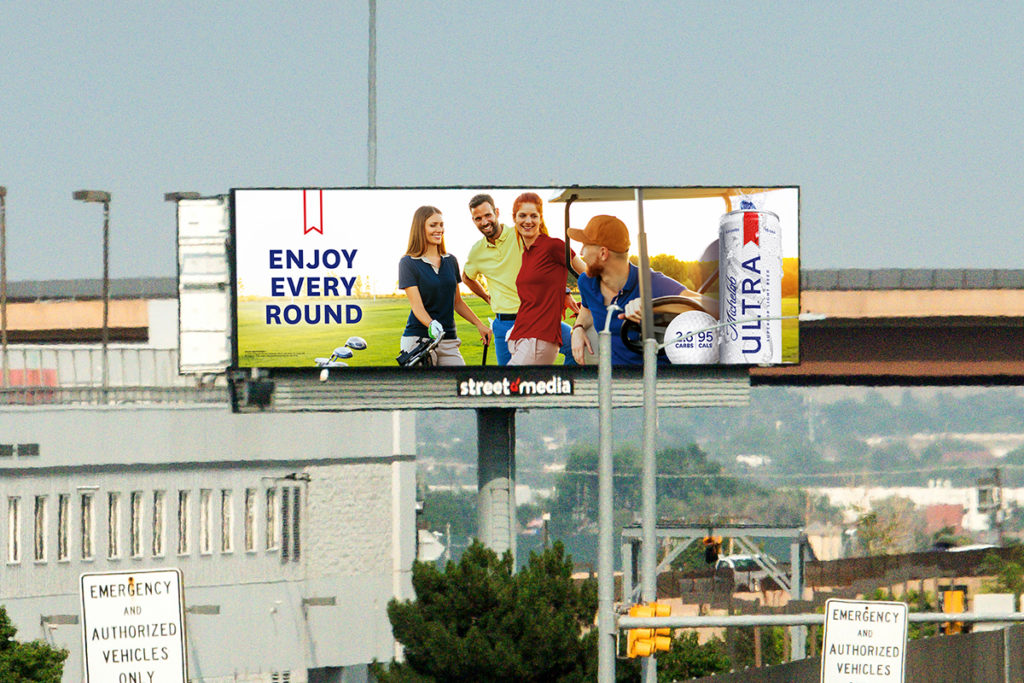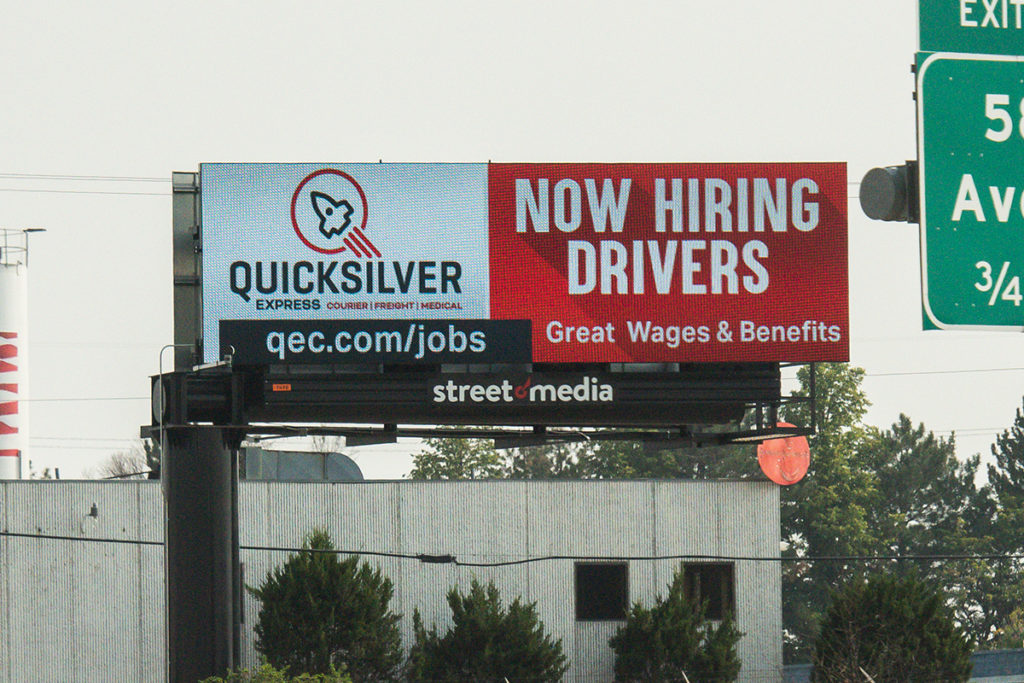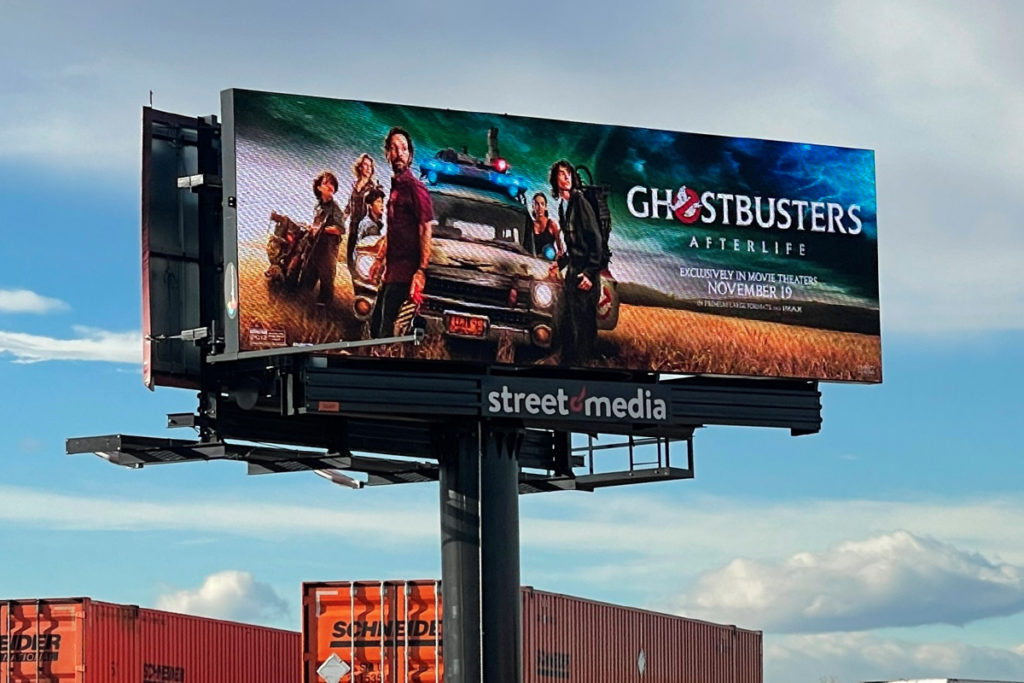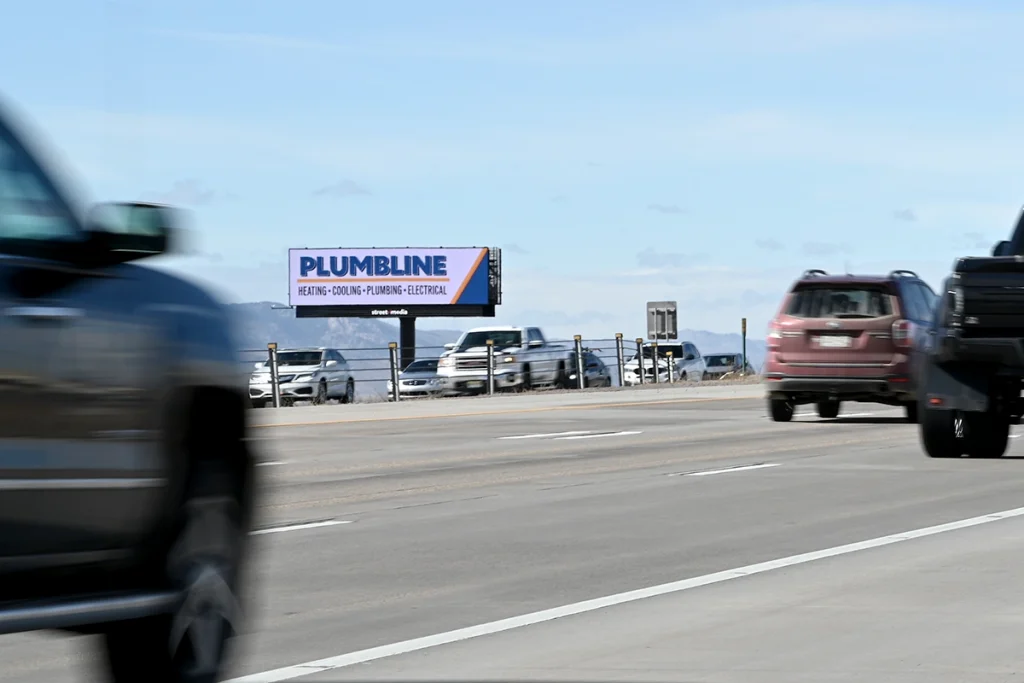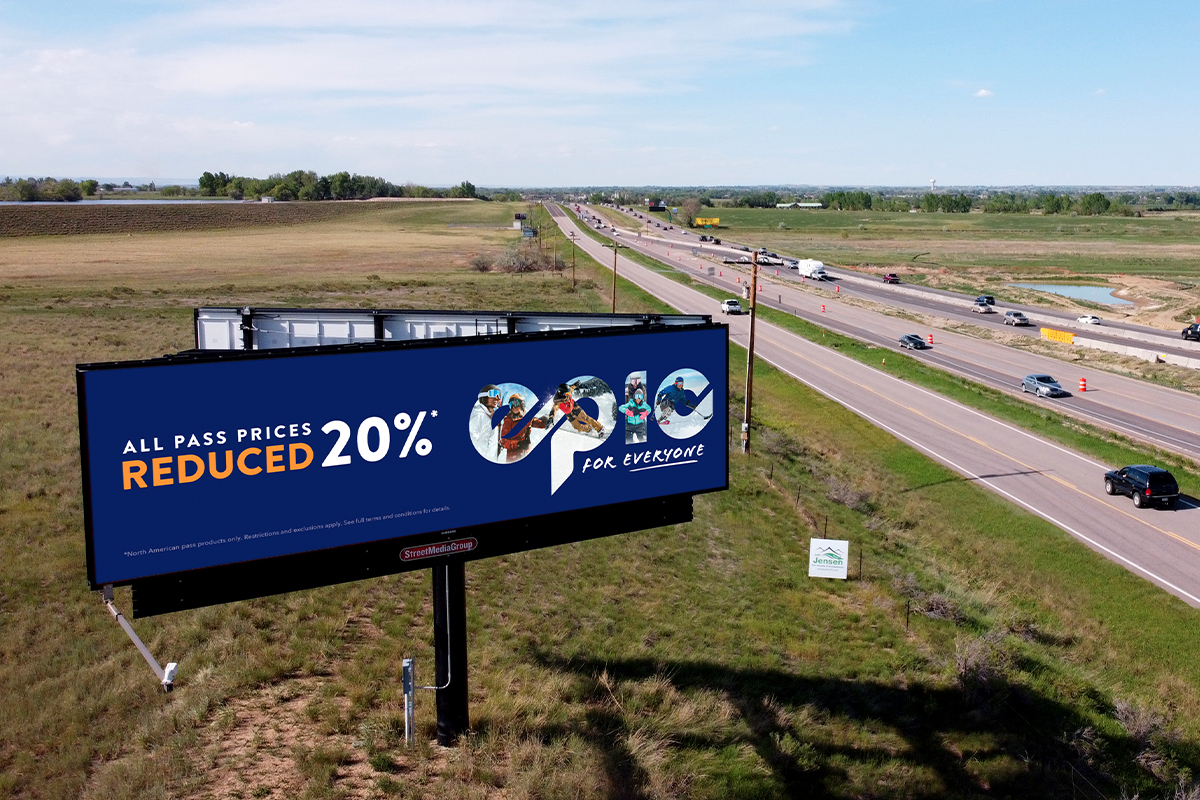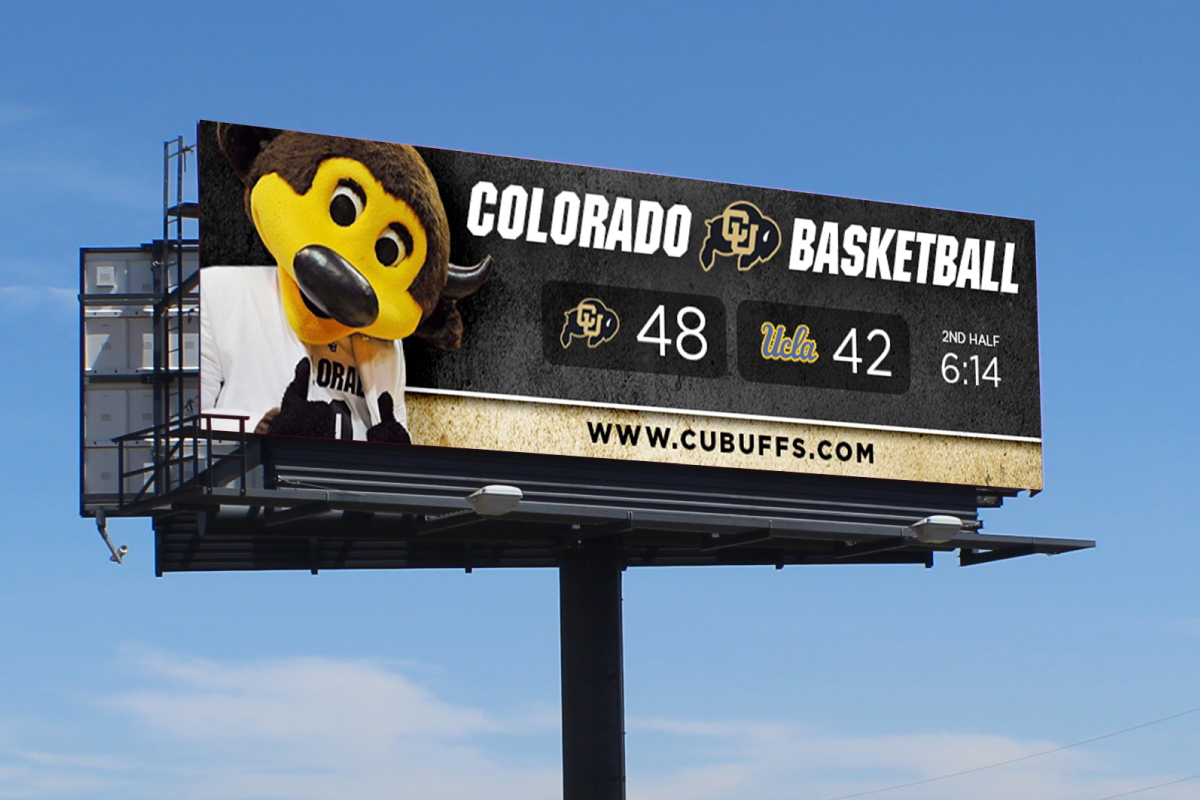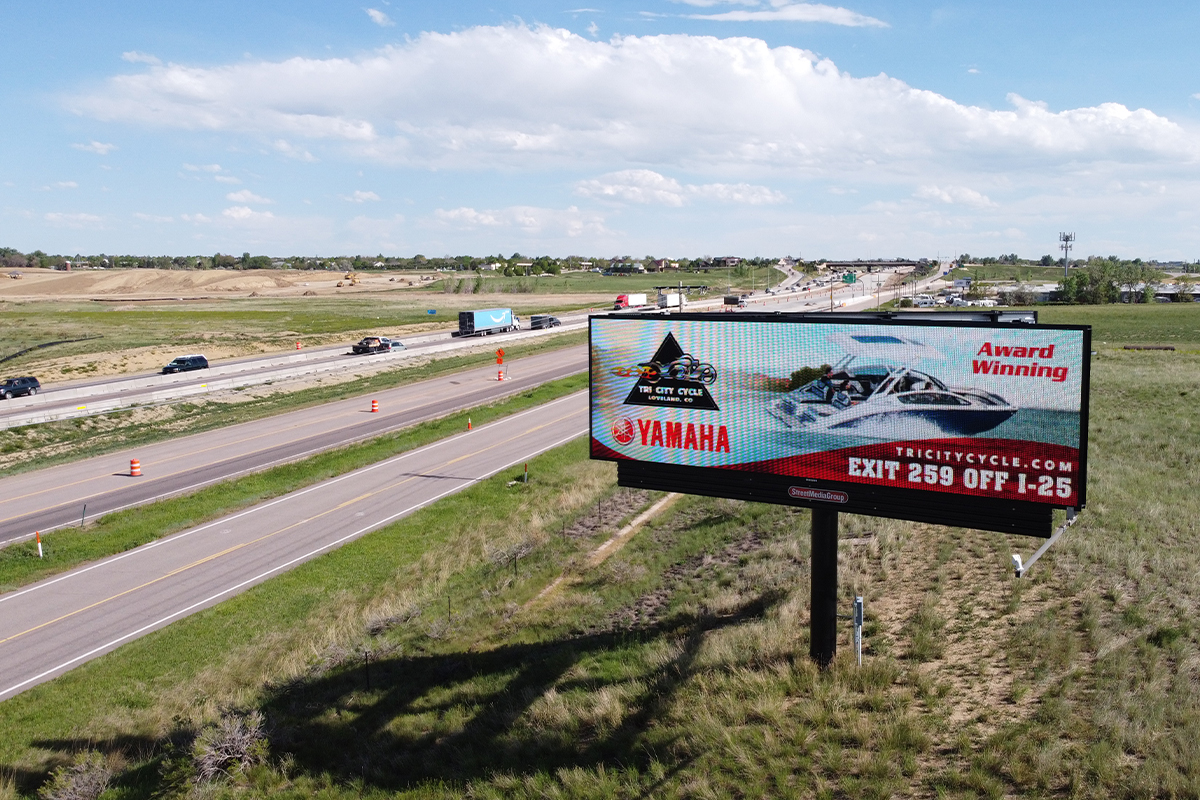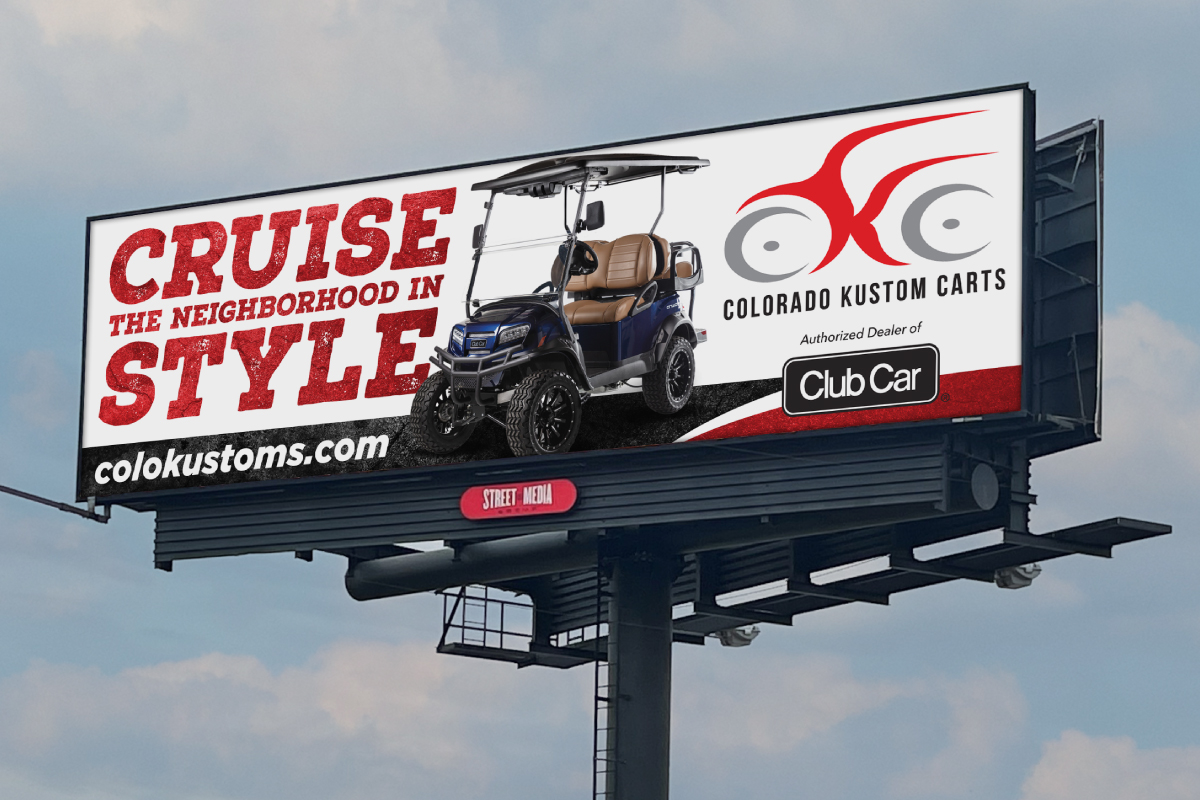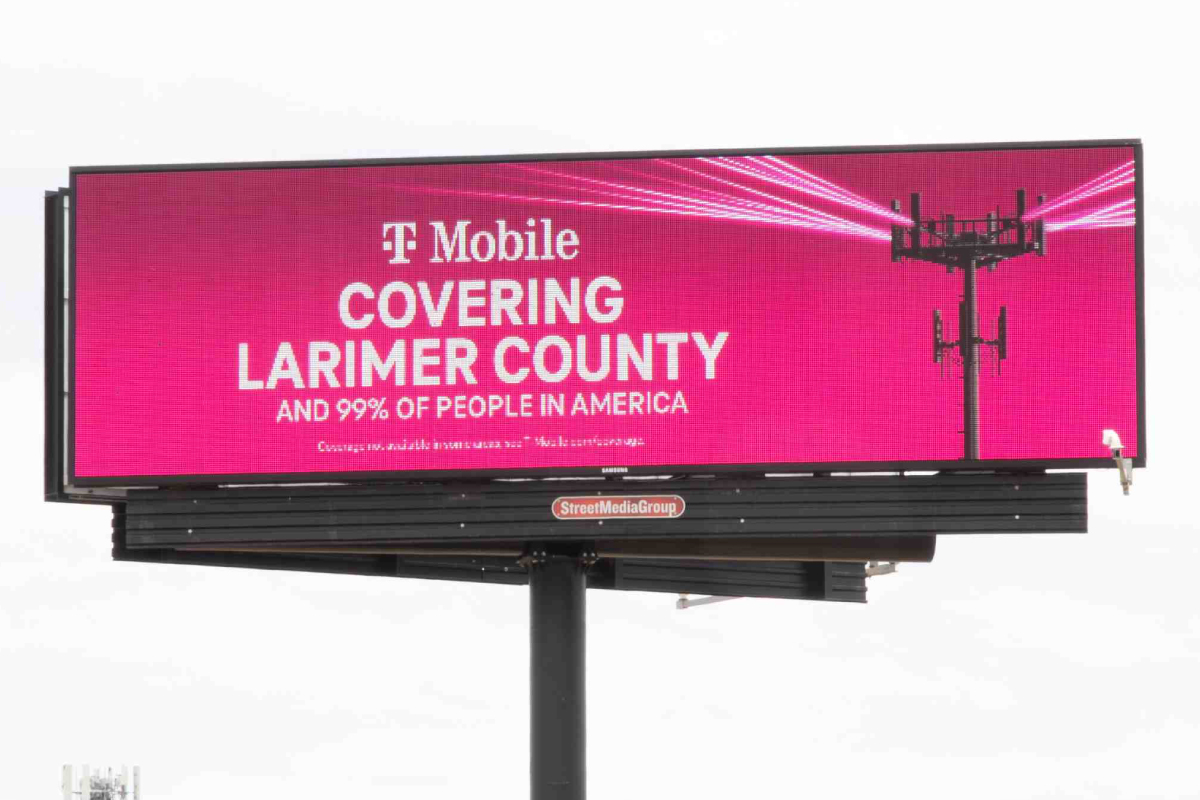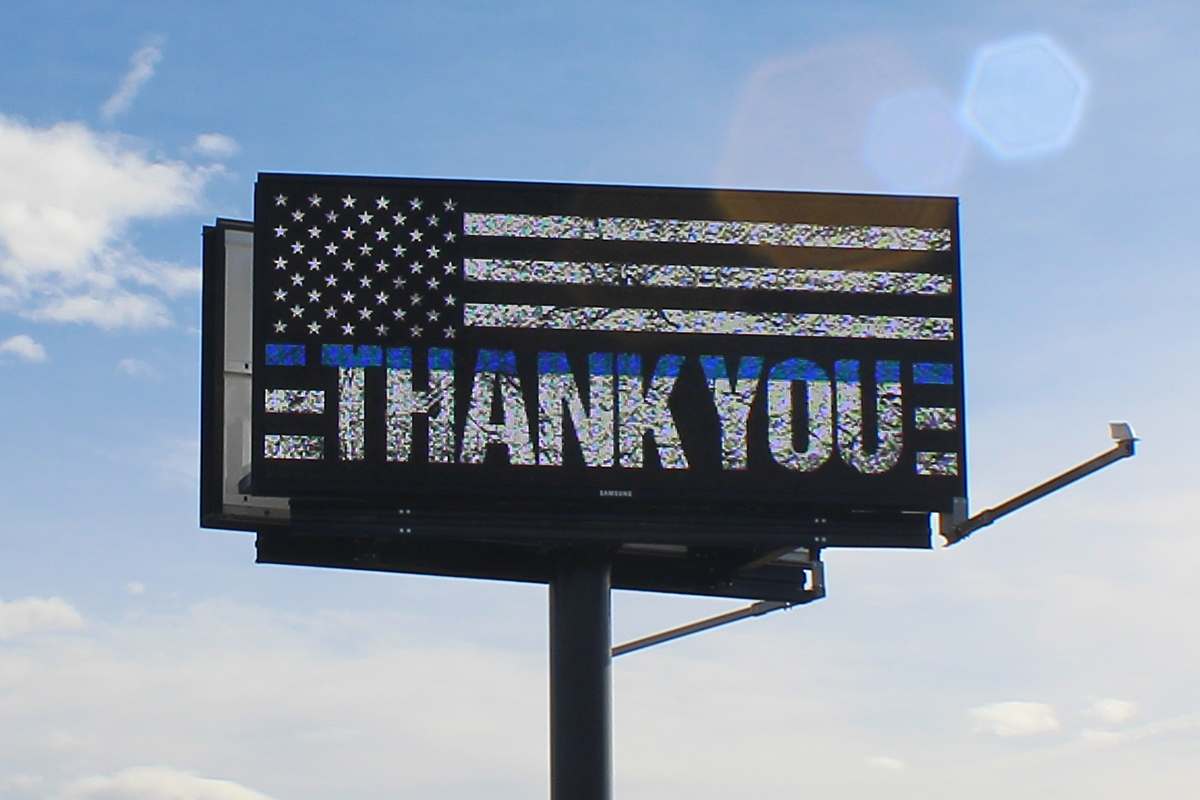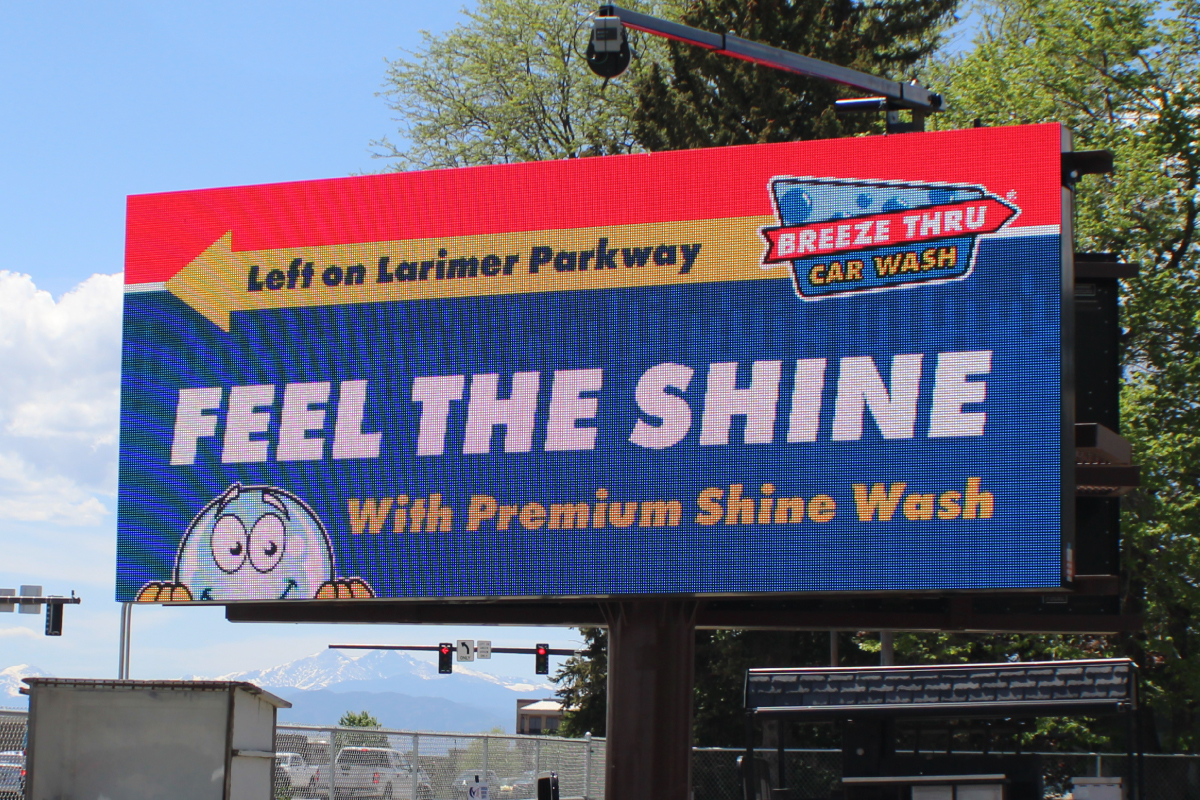In the world of billboard advertising design, less is more. The most effective billboard ads focus on a single point, and are designed to make the message as clear and bold as possible. This allows a moving audience to absorb the message without effort. The seed has now been planted in the minds of consumers for future action, and top-of-mind awareness of your brand has been established. As a general rule, no more than ten words should be used in an out-of-home ad. Limiting to eight words is even more effective. Using a high degree of color contrast, simple imaging, and bold fonts will also give your ad the best chance at success.
Due to the high degree of repetition that out-of-home advertising delivers, building brand awareness is an excellent way to use a billboard. Prominently display your logo and/or name of your business, along with branded colors or design elements to make a lasting impression in the minds of consumers as they pass your billboard everyday. Your brand will be the first to come to mind as soon as those consumers need your product or service.
Another highly effective use of billboards are directional ads. Use all of that space to clearly guide drivers to your storefront. Spoiler alert, big arrows work when used properly. Don’t have a storefront? You can just as effectively direct traffic to your website. Either way, this is a great way to instantly increase activity and sales.
If you’re planning to offer an exciting deal or need to promote a special event, billboards are the best way to reach a large number of potential customers at a very low cost per thousand. If you use billboards to tell the world about your offer or event, you can expect big results.





